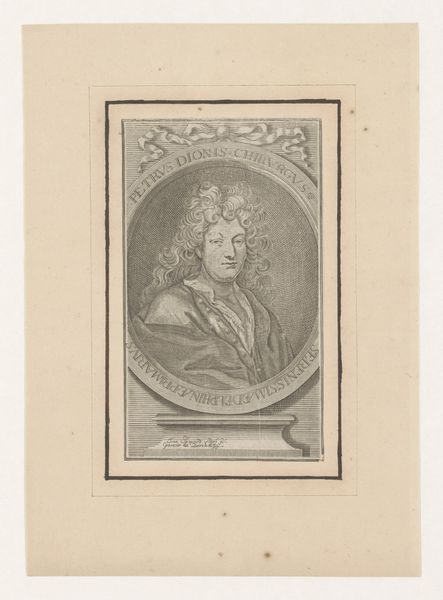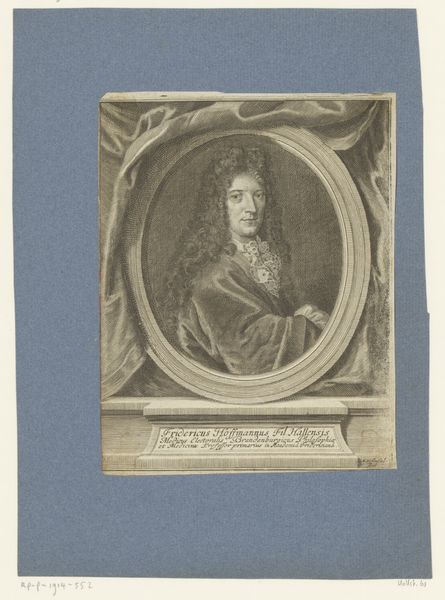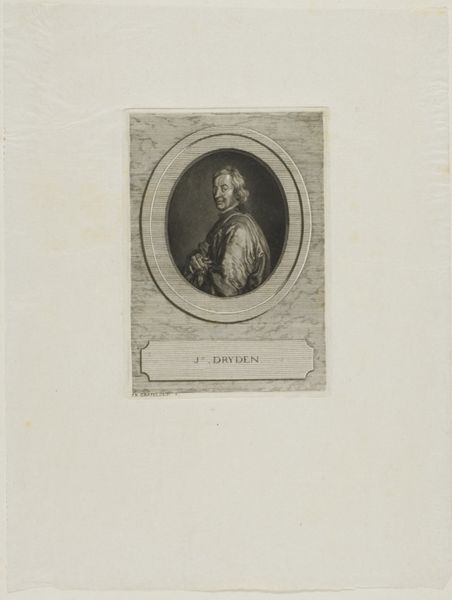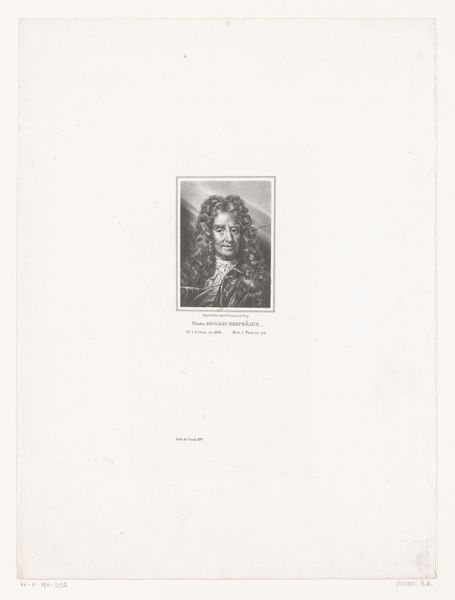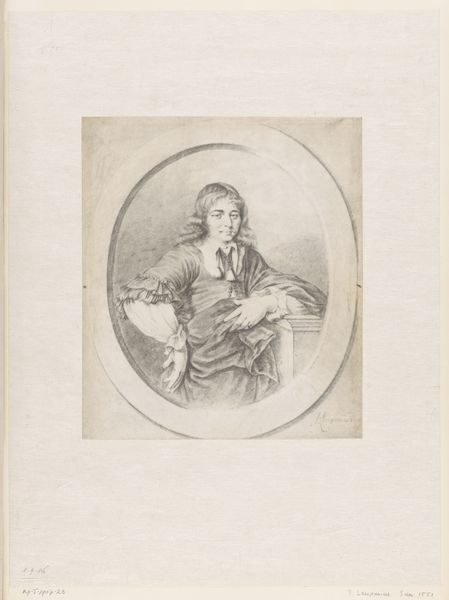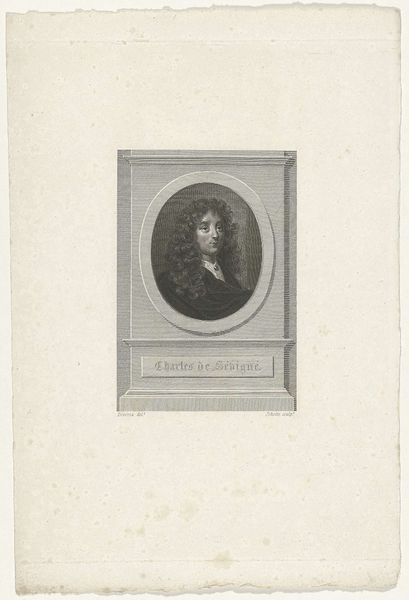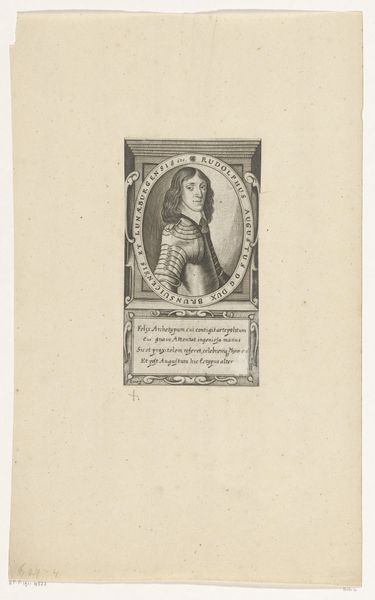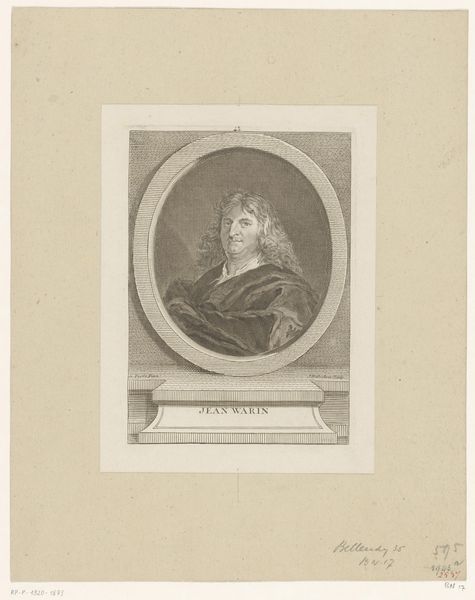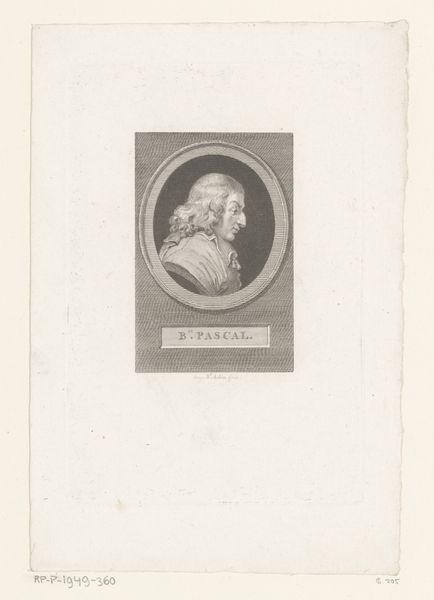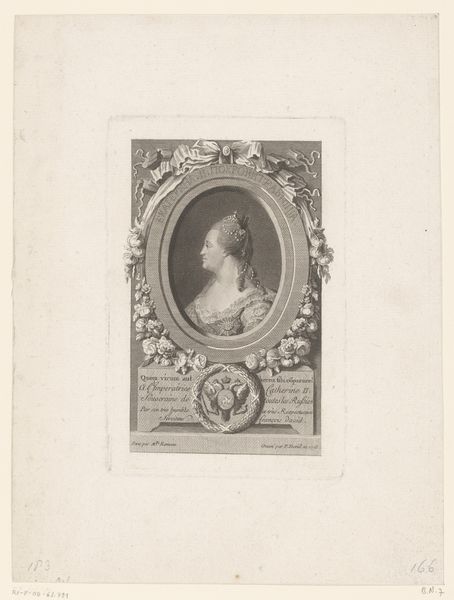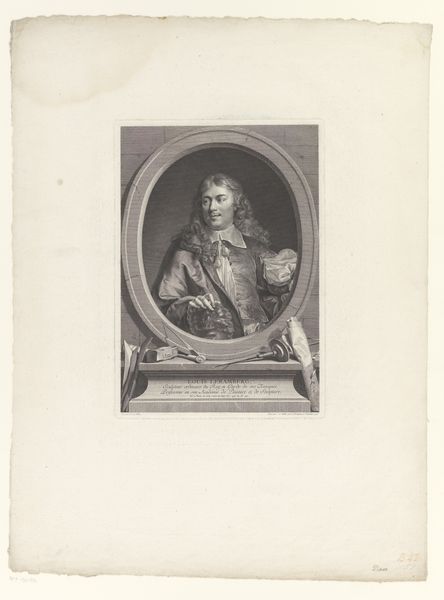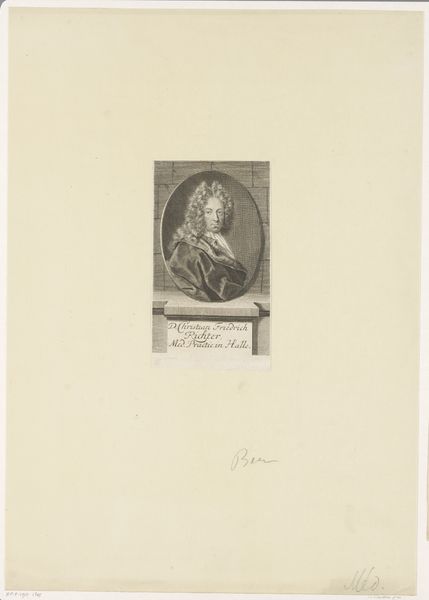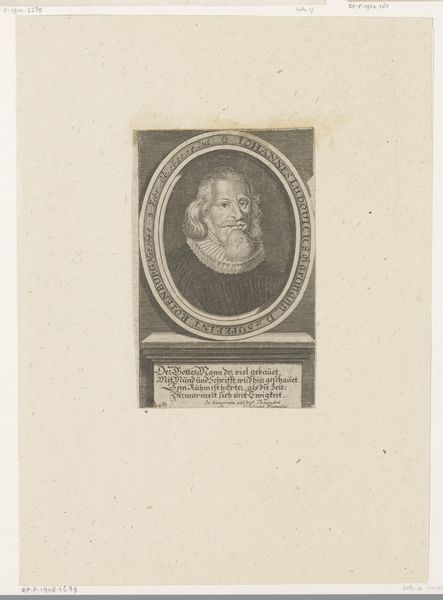
print, engraving
#
neoclacissism
#
aged paper
#
pale colours
# print
#
old engraving style
#
academic-art
#
engraving
Dimensions: height 102 mm, width 88 mm, height 269 mm, width 165 mm
Copyright: Rijks Museum: Open Domain
Curator: Here we have a print, most likely an engraving, titled "Portret van Jean Racine," created sometime between 1827 and 1829 by Jean-Mathias Fontaine. The engraving depicts Jean Racine, a prominent French dramatist. Editor: Oh, wow, immediately, it gives me a wistful feeling, a certain melancholic air. The subject, framed within that ornate border, appears so serious. Almost weighed down. Curator: The technique employed speaks volumes about the printing practices of the period. Engraving as a medium necessitates rigorous control. Notice how the fine lines define not only Racine’s likeness but also the textural elements. We need to think about the skill, and also the time needed, to produce something so refined on what looks like quite aged paper. Editor: The paper itself becomes part of the story, doesn’t it? A witness to the passing of time. It is quite delicate; it makes me wonder who held it last, and how. But there's something unsettling. It feels like he is trapped, frozen. Curator: The rigidity inherent to neoclassicism could amplify that feeling. There’s an emphasis on restraint, clarity, and order—ideals that arguably suppress spontaneity and emotion. Think of this work as a commodity as well. How would these prints have been made, sold, distributed? Editor: I suppose I react to that idea of commodification in art history with some resistance; yet that frame! It's like Racine’s frozen thoughts or plays are on show like expensive objects! Though… now you point it out, there’s something very powerful to knowing there was skill involved. Curator: It emphasizes the craftsmanship involved. Understanding those tangible processes can transform our understanding of the piece beyond mere aesthetics or attribution. Editor: You are right. Suddenly, I see past the sad gaze and start admiring the hand that so delicately cut those lines. Curator: Exactly, recognizing the confluence of labor, materials, and the societal factors that birthed it opens up fresh avenues of thought about this print.
Comments
No comments
Be the first to comment and join the conversation on the ultimate creative platform.

